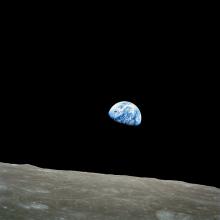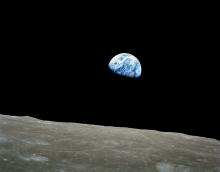Listen to today's episode of StarDate on the web the same day it airs in high-quality streaming audio without any extra ads or announcements. Choose a $8 one-month pass, or listen every day for a year for just $30.
You are here
Far From the Sun
On average, Earth is 93 million miles from the Sun. Over the course of a year, though, that distance changes. Right now, for example, we’re a million-and-a-half miles farther than average. In fact, tomorrow we’ll be farthest from the Sun for the entire year.
The distance changes because Earth’s orbit looks like a flattened circle. The amount it’s “flattened” is called its eccentricity. Earth’s eccentricity is about 1.7 percent. So our distance from the Sun ranges from 1.7 percent closer to 1.7 percent farther than average.
The eccentricity isn’t constant. It varies over a period of a hundred thousand years. The change is caused by the tug of the other planets — especially Jupiter and Saturn, the heaviest planets.
During that long period, the eccentricity ranges from near zero to almost six. Earth’s average distance to the Sun doesn’t change, though, and neither does the length of its year.
One thing that does change is the amount of solar energy that strikes Earth. When the orbit is most eccentric, solar energy varies by about 25 percent over the course of a year. That’s compared to just seven percent today. So the hemisphere that’s having summer when Earth is closest to the Sun would have hotter summers and colder winters than the other hemisphere.
Right now, Earth’s orbit is getting less eccentric. In tens of thousands of years, it’ll be close to a perfect circle — and the distance to the Sun will remain almost constant.
Script by Damond Benningfield






